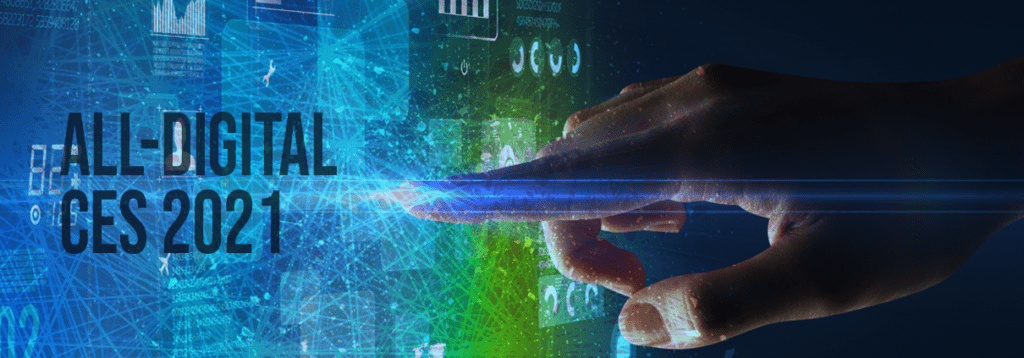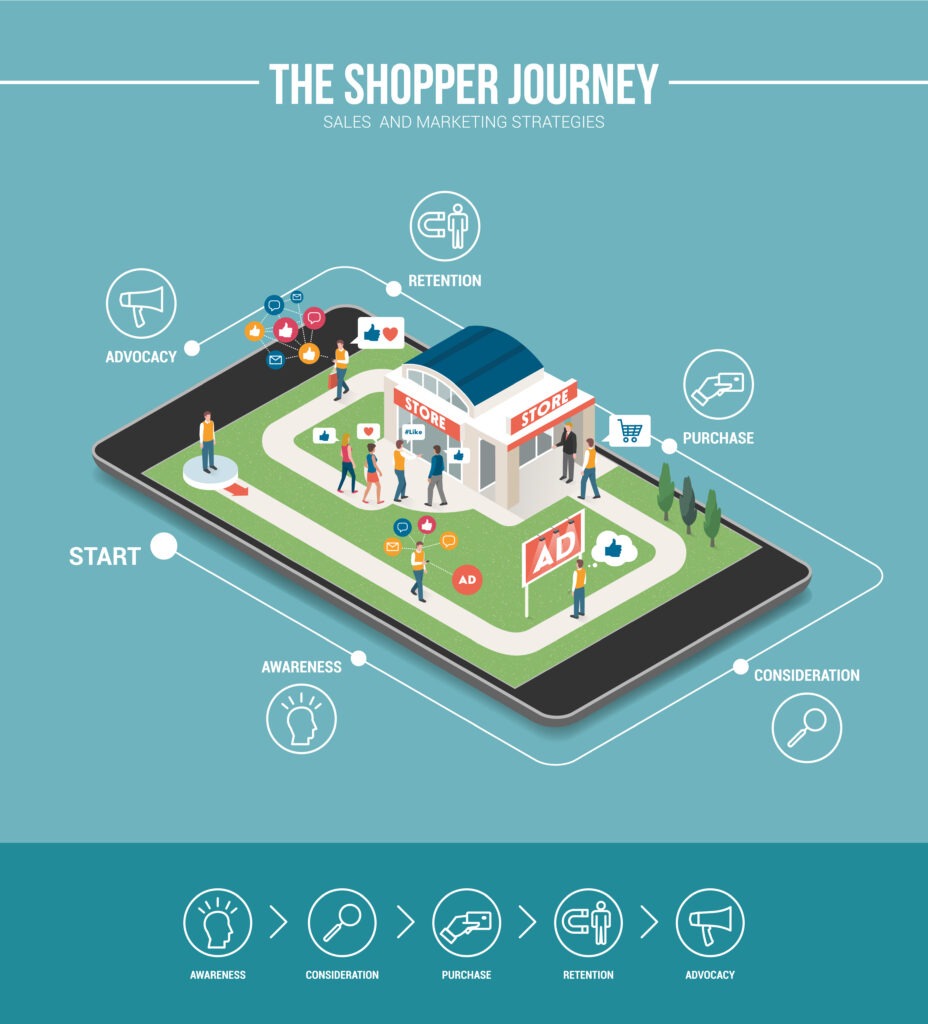For the technology industry it was that time of year again!
CES 2021 was here, but this time around the well-known conference
organized by the CTA (The Consumer Electronics Association) went digital!
For the first time in 54 years we experienced a virtual trade show, where exhibitors showcased their products by coming up with innovating ways to do so. In addition, the technology business community interacted with each other through multiple communication channels such as real-time chats, messaging and other networking tools.
As we all know CES 2021 is all about the future, as every year it exhibits the newest innovations in the technology space. It brings to the table a great variety of smart products, from robots to smart home appliances, as well as many other innovative technologies. For sure, attending a digital venue was a new experience for all!
Here are the top three tech industry trends we saw, which are here to stay for the long haul.
1. Digital transformation accelerated due to fast changes in consumer behavior
In both the B2C and B2B markets, digital technology usage rapidly started accelerating as a result of the sudden changes in our everyday lives caused by the pandemic. People were forced to adapt to new technologies at a very fast rate due to the needs they began to face. Some of these trends were already here, but the pandemic triggered a more rapid pace of adoption, from remote meetings to e-commerce and smart home.
In retail and e-commerce in particular, we saw how brick-and-mortar businesses suddenly started closing at a faster clip. As a result, or perhaps as one of its main causes, online shopping and home deliveries began to flourish during these challenging times, opening a whole new world of possibilities to the industry. Reflecting on these changes, Luke Motschenbacher, VP of Merchandising at Best Buy stated:
“Mostly the changes you have seen in retail are permanent because customers have found new ways to shop, new ways to explore, and they become accustomed to the most flexible product fulfillment mechanisms that have ever existed in the industry.”
In short, we have seen how the impact of changes in consumption patterns has encouraged innovation and has opened emerging markets across all areas of the tech industry, such as Smart Home, Digital Health, Robotics, and the like. As the world needed to act quickly, and adapt to new ways of living, technology became an asset in preserving the well-being of people during these difficult times. This paved the road to launching new products and to the acceleration of research on smart solutions aiming to improve everyday life.
2. The home becomes a multi-functional hub to live, play, work and learn.
For most of us, because of the pandemic, our home became a place to work, entertain, play, and learn. For this reason alone, we saw how new needs arose in terms of comfort and functionality. The “home as a hub” spurred the acceleration of the smart home market last year, as Steven Hummel, the manager of market research at CTA explained: “2020 was a spectacular year for the smart home industry. We had revenue grow by 8% over 2019 (even in the middle of pandemic)…a lot of product movement, we saw a 17% increase in shipment volumes of DYI smart home products.”
All kinds of smart home solutions experienced growth, including the biggest categories of smart lighting, smart displays, smart doorbells, smart thermostats, and smart speakers, which saw a huge surge in sales. For smart home vendors the scenario in the upcoming years is promising.
Once our behavior changed, our relationship with technology changed as well. While people continue changing their habits, investing in more smart home solutions and expanding the capabilities of the network at their homes, we will continue looking at the rise of an emerging and exciting market.
The CTA forecasted that the estimated revenue of smart home related products would surpass 28 billion by 2022. If families remain at home and continue to implement new technologies in their daily lives, we might see a new growth pattern emerge during 2021. Some of these new technologies include, but are not limited to, no-touch technology, which can be found in both home appliances and vehicles among other innovations. We also have smart security, voice-control and command technologies, in addition to gaming and streaming services.
3. Adoption of digital health products is here to stay
Covid-19 has certainly changed our lives, but most importantly, we have seen a global impact because of it. As a result, the digital health industry has experienced rapid growth and has thrived during the pandemic. Furthermore, as the world needed to act quickly, the digital health sector became an asset in preserving the well-being of people around the world as COVID cases started to skyrocket during these difficult times.
On the other hand, smart solutions such as remote patient monitoring, fitness wearables, biometrics monitoring devices, stress trackers, and telemedicine solutions have become essentials in our everyday lives. Trends show that consumers are rapidly adapting and are more proactive to understand their health with the use of wearables, leading to an age of personalization within the health space.
This change in lifestyle, health awareness and medical needs is opening a new array of possibilities to the industry. In this context, everything is an open game for innovation, consumers are central, and service providers are key, but it is the smart technologies vendors who will play an enabling and critical role in leading societies to a healthier and more active lifestyle.
Summary
With crisis comes opportunity, and what we can learn from these trends is that it will neither be the strongest or the biggest, but the most adaptable who will survive unfavorable scenarios. Hence, when businesses react early and fast to present conditions, they have found a new path to innovation and to emerging markets. As Luke Motschenbacher inferred in the session called Macro Trends Affecting the Tech Industry Session at CES 2021 “Now, you have people from different generations and demographics that many times the technology industry does not target because they are slow adapters, and this year (2020) that adoption occurred and accelerated to an extent we haven’t seen before. Now you have a whole new market that feels comfortable adopting new technology.”




